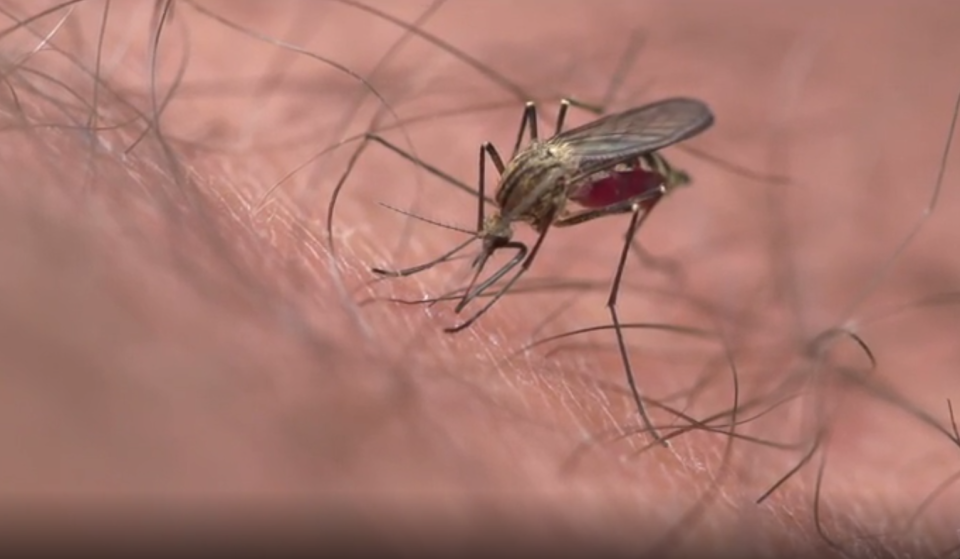With mild spring weather come scorpions, spiders, roaches. Here's what to watch for
It’s a season of renewal, a period of awakening and growth, also known as spring. But if spring means a new start for humans, it can mean the same for non-humans. As temperatures rise and windows and doors are opened to let in the warm air, unwanted pests can make their way in.
Arizona is home to myriad insects, many of which emerge during the spring. Scorpions, American roaches, crickets, spiders and mosquitoes are most common around metro Phoenix.
Many of these creepy crawlers and flyers sound scarier than they actually are. Not all pose a threat to humans and pets, and even if they do, the saying "they are more scared of you, than you are of them" rings true, according to exterminators in Phoenix.
But they are here, so it's best to know what you're up against.
“Typically, a lot of the insects we see out in the Valley, in the winter months, lay dormant. That's when they're laying their eggs,” said Jeremie Izon, Insectek’s Phoenix service manager. “And in the spring is when you'll see an uptick in activity because that's when things start hatching. Flowers start to bloom, and a lot of the flying insects will start coming out.”
What are you likely to see? Glad you asked.
Scorpions
Scorpions are the most common pest Insectek treats when the temperatures start to warm. There are more than 50 species of scorpions to be found in the Southwest desert landscapes, according to the University of Arizona’s Cooperative Extension.
The Arizona bark scorpion is the most dangerous to humans. They are the only scorpion species in the U.S. with venom strong enough to cause serious symptoms. The largest scorpion in the country is the Arizona giant hairy scorpion, although they are more unattractive than they are hazardous.
Scorpions tend to hide out in warm, dry places like in shoes, piles of wood and rocks, storage sheds, clothes and sleeping bags. Proficient climbers, these pests easily traverse even textured walls and find their way inside through window vents, exterior walls with openings and gaps in doors.
Scorpions feast on spiders, other scorpions, cockroaches and other small prey. Izon describes it as the circle of life.
“Every pest is fighting for resources in the same space, and most of the time they end up fighting it out instead of sharing,” Izon said.
Spiders
Like scorpions, spiders like to take cover in dark, undisturbed places. Most spiders in Arizona are not venomous, but the familiar and often-feared black widow and brown recluse pack a threat.
Izon says these spiders are not too territorial, and typically bite when they feel pressure on their bodies. Most of the time, humans don’t even realize they are entering a spider’s space and are faced with a big surprise once they see the skin irritation and redness and feel the pain.
“Black widows are not active hunters, so they’ll stay in one area,” Izon said. “Typically, when people get bit it’s because they go to put on the shoes in the garage that haven’t been touched in a while, and when the spider feels that pressure of the foot, they bite.”
Not leaving doors or windows open and making sure the home is properly sealed are the first steps of ensuring spiders stay outside and out of personal belongings, according to Izon. Another tip from the expert is to trim trees and other vegetation at least two feet away from the home.
American cockroach
Along with scorpions and spiders, many Phoenix residents will see the American cockroach, often referred to as a "waterbug" (though they are not aquatic roaches). They come into homes seeking water, mostly, leading Izon and other exterminators to call them the "occasional invaders."
Because these roaches are looking for water, they are often found in damp places. For this reason, Izon recommends “plugging up the sinks, making sure screens are covering all drains because sometimes they'll come up from there, and making sure the seals around doors are properly sealed as well.”
Mosquitoes
A mosquito’s bite will leave the skin itchy, irritated, and often red and raised. But these flying pests can also carry the West Nile virus, a disease that can cause fever, rash and muscle aches.
Preventing them from breeding is important, Izon said, for the safety of us and our neighbors. Larvae live in water, so the most efficient way to reduce the number of mosquitoes flying around is to eliminate the number of places they can breed.
For additional tips on how to best protect your home from mosquitoes, visit Arizona’s Department of Health Services page with mosquito information.

Another flying pest that resembles the mosquito is the crane fly, also called mosquito hawks. With long and slender bodies and legs, they often get confused with mosquitoes, but crane flies are not attracted to human blood.
They do not bite, sting, or pose any other type of threat to humans or animals, and mostly feed on nectar — but they can look terrifying.
Protect your home
The overall message from Izon and other exterminators is to ensure your home is sealed properly, from door jams and window seals to sink and shower drains and toilets. Pests come indoors mostly in search of water, so making sure to not leave any water standing (inside or out) is crucial.
Seeking help from pest management companies is often effective; just make sure to do research on what type of service you require and what chemicals, if any, you want used.
Caralin Nunes writes about weather and related topics for The Arizona Republic and azcentral. Email her with story tips at caralin.nunes@arizonarepublic.com.
You can support environmental journalism in Arizona by subscribing to azcentral today.
This article originally appeared on Arizona Republic: How to protect your home from invading armies of spring pests

